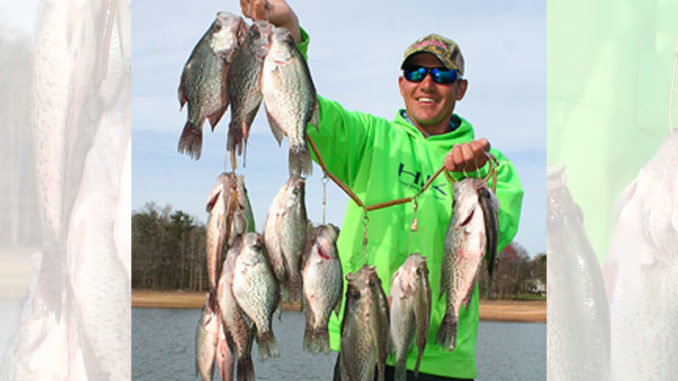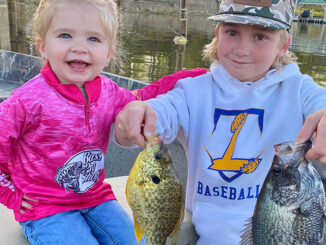
Brush piles are good, but don’t overlook docks
Typically, in late winter and early spring, crappie in South Carolina’s Lake Hartwell will be locked onto brush piles, making them easy to locate and catch. Just find a brush pile with a school of crappie around it and drop down a jig or live minnow, and pretty soon you will have a cooler full of slabs.
But unseasonable rising temperatures and excessive rain can put a damper on that kind of fishing. When the water gets too muddy, crappie will leave those brush piles in 15 to 25 feet of water and many will find refuge around brush under docks, according to Steve Pietrykowski, who operates Fishski Business Guide Service.
“Last year in February, it got really warm, and there was a lot of rain that muddied up the creeks, said Pietrykowski (864-353-3438). “You can use a side-scan to locate them under docks where people have put brush, but with a pontoon, it is hard to flip docks.”
By the time March rolled around, Pietrykowski was going with a tried-and-true tactic for Hartwell crappie — pulling long lines. Long-lining can be one of the most-effective ways of catching crappie when they are moving from deep brush towards shallower water in preparation for the spawn.
Long-lining allows anglers to cover lots of water
“I had to cover water, catching the fish that were spread out,” he said, “so I pulled long lines.”
Pietrykowski likes to use 6- to 8-pound, high-visibility line, either green or chartreuse, to be able to see where the lines are running and avoid tangling them.
“I like curlytail grubs, 1/32- to 1/16-ounce, because they give a little more action when pulled on long lines,” he said. “Colors can be crucial, depending on water color. Typically, pink and chartreuse are great for crappie on Hartwell. Last year, a blue body with a white tail was outperforming all the other colors.”
Crappie seem to prefer a boat speed of .7 mph to 1.2 mph, he said, although one day last spring the crappie wanted the baits pulled faster at 1.7 mph.
“Don’t be afraid to vary your speed until you find the speed that works best,” said Pietrykowski, who starts deeper with a heavier grub and moves lighter and shallower as the water warms.
“They start pushing up when the water temperature gets close to 60 degrees and they will start dropping eggs at 65 degrees, Pietrykowski said. “I like to start out deeper and work shallower, from 25 feet up to 5 feet, until I locate a zone that holds more fish.”



